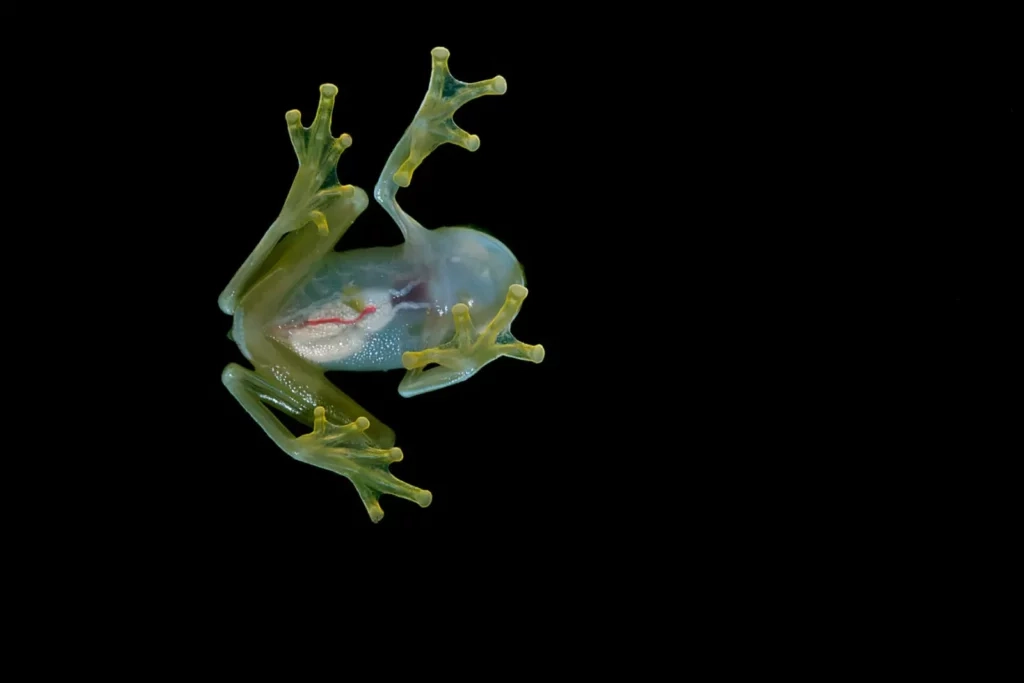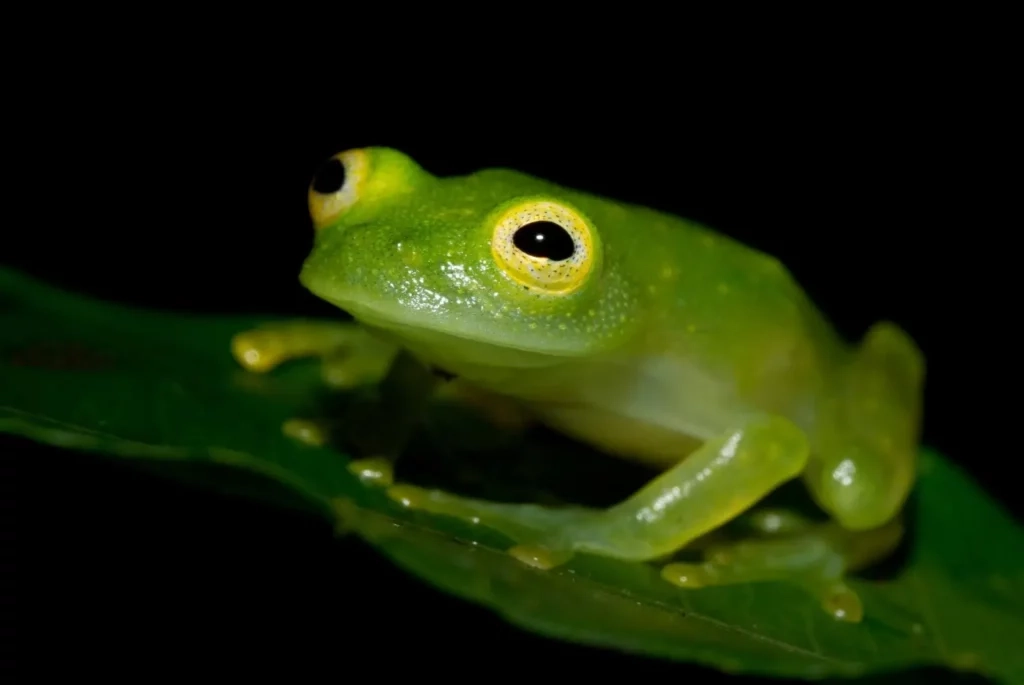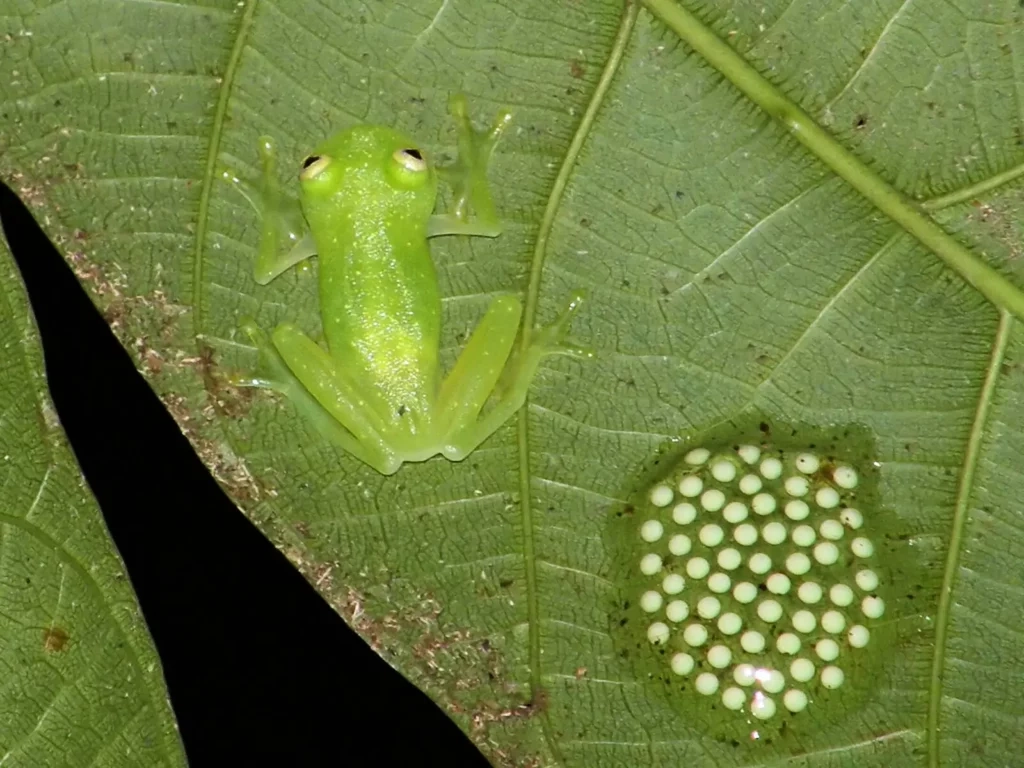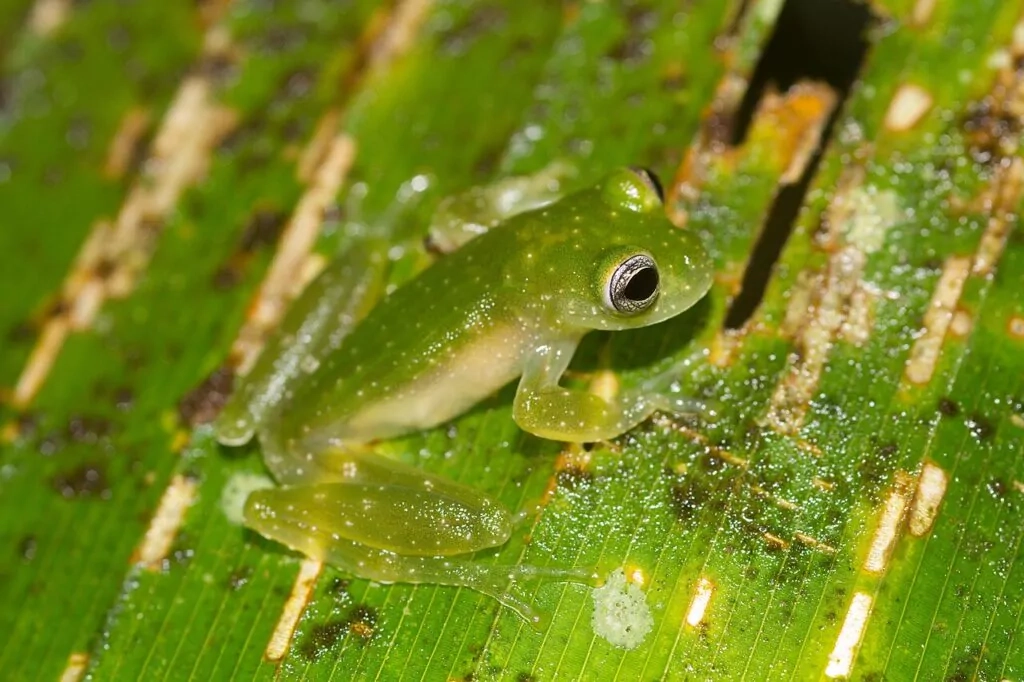Table of Contents
Imagine encountering a creature so extraordinary that you can see its heart beating inside its body. This is the reality of the glass frogs in the Amazon, a group of amphibians whose translucent skin makes them one of nature’s most remarkable designs. With internal organs visible beneath their clear undersides, these frogs captivate scientists, conservationists, and nature enthusiasts alike.
But what makes glass frogs more than just an ethereal marvel of the tropics? Beyond their mesmerizing appearance, these creatures play an indispensable role in the Amazon’s ecosystem. From their unparalleled camouflage to their function as ecological health indicators, their existence is a critical reflection of the forest’s balance—and its fragility.
Let’s delve into the captivating world of glass frogs to uncover their unique features, ecological importance, and the urgent need to secure their future.
The Glass Frogs of the Amazon: What Are They?
Glass frogs belong to the Centrolenidae family, a group of amphibians celebrated for their translucent skin that reveals internal organs like a living X-ray. This characteristic is not merely an aesthetic anomaly—it plays a vital role in their survival. By seamlessly blending into their surroundings, they elude predators in the dense foliage of the Amazon.


These frogs are small, typically measuring between one and three inches in length. Their lime-green dorsal hue enhances their camouflage, making them nearly invisible against leaves and moss-covered branches. Predominantly nocturnal and arboreal, they spend most of their lives in trees, venturing to the forest floor or stream edges only for specific activities like breeding. Their preference for high humidity makes rivers and streams crucial to their survival, offering both hydration and a haven for reproduction.
It is in the dense, humid rainforests of the Amazon that these intriguing amphibians thrive, relying on the region’s uniquely diverse yet fragile ecosystem to sustain them.
Distribution and Habitat in the Amazon
Glass frogs are exclusively found in the tropical rainforests of Central and South America, with the Amazon Basin serving as one of their most significant strongholds. Their habitat mirrors the Amazon’s lush, biodiverse environments, with the frogs favoring the dense foliage of tree canopies and the cover of vegetation near streams and rivers. These areas grant both protection from predators and the high moisture levels required for their amphibian physiology.
However, their reliance on undisturbed habitats underscores their vulnerability. Logging, mining, agriculture, and pollution can severely impact the delicate balance of their environment, pushing these frogs toward habitat fragmentation and population decline. Despite these challenges, their exceptional adaptability has enabled them to survive in the competitive Amazon landscape for millennia.
What makes them even more fascinating are the unique anatomical and behavioral adaptations that enable them to thrive in such environments.
The Anatomy and Adaptations of Glass Frogs
Glass frogs are best known for their translucent ventral skin, through which their organs—including the heart, intestines, and even eggs in females—are visible. This transparency gives them an evolutionary edge by allowing them to reflect their surroundings and avoid detection, a process called edge diffusion that disrupts an observer’s ability to distinguish outlines.


But their adaptations extend far beyond their transparent skin:
- Toe Pads for Climbing: Glass frogs are highly adapted for an arboreal lifestyle. The adhesive pads on their toes allow them to cling to even the smoothest, wettest surfaces, like the slick leaves of rainforest canopies.
- Advanced Night Vision: As nocturnal creatures, their eyes are finely tuned to spot prey and avoid predators under low light, giving them a competitive advantage in their nighttime ecosystem.
- Parental Care: Male glass frogs exhibit protective instincts rarely seen in amphibians, diligently guarding fertilized eggs from predators such as snakes, wasps, and other insects until the offspring are ready to hatch.
Through these adaptations, glass frogs carve out a unique role in the Amazon, not just as biological marvels but as essential contributors to the ecosystem.
The Role of Glass Frogs in the Ecosystem
Glass frogs are indispensable to the Amazon’s intricate food web. Primarily insectivores, they help control populations of flies, mosquitoes, and other small insects. This natural pest control indirectly supports agriculture and reduces the prevalence of insect-borne diseases.
In turn, glass frogs serve as prey to a variety of predators, including snakes, birds, and larger amphibians, facilitating the flow of energy throughout the ecosystem. Their presence is a key indicator of a healthy environment, as amphibians are highly sensitive to ecological disruptions, such as pollution, climate variation, or habitat degradation. A thriving glass frog population often signals a functioning and stable rainforest ecosystem.
Unfortunately, the balance they represent is under pressing threats, highlighting the urgent need for conservation efforts.
Threats and Conservation of Glass Frogs
The Amazon rainforest, home to glass frogs, is under relentless pressure from human activities and environmental changes. Habitat destruction, driven by deforestation, agriculture, and urban expansion, has caused the fragmentation and disappearance of glass frog populations. The contamination of waterways poses another major threat, as these streams are vital for both hydration and reproduction.
Climate change compounds these dangers by altering patterns of rainfall, increasing temperatures, and disrupting the ecosystems glass frogs depend on. Moreover, the invasive chytrid fungus, a devastating pathogen, continues to decimate amphibian populations worldwide, further placing this species at risk.
Despite these challenges, conservation efforts dedicated to preserving glass frogs are progressing with hope. Initiatives such as habitat restoration projects aim to reconnect fragmented forests, providing corridors that support ecological balance and migration. Scientific organizations like the IUCN Amphibian Specialist Group are pioneering efforts to research disease-resistant populations and promote conservation measures.
Conclusion
Glass frogs, with their otherworldly transparency and role as ecosystem caretakers, are far more than biological curiosities—they are symbols of the Amazon’s resilience and interconnectedness. Their survival is directly tied to the survival of the rainforest itself, as they embody the delicate balance between climate, water, and life.
The threats they face from deforestation, pollution, and disease reflect the broader challenges facing the Amazon. Yet, hope lies in the growing efforts to protect their habitats, restore ecological balance, and empower local communities to support sustainable practices. .
Looking ahead, the fight to save the glass frogs is not just about preserving a single species. It is about safeguarding the intricate web of biodiversity that sustains the Amazon and, by extension, our planet. The question is not whether we can protect these remarkable creatures—but whether we will act in time to ensure their translucent brilliance continues to inspire future generations.



